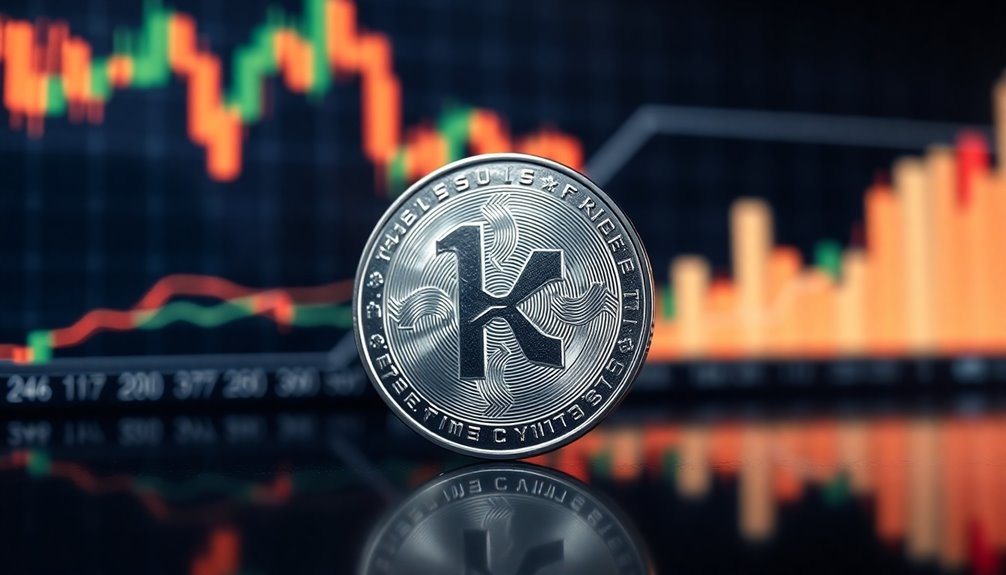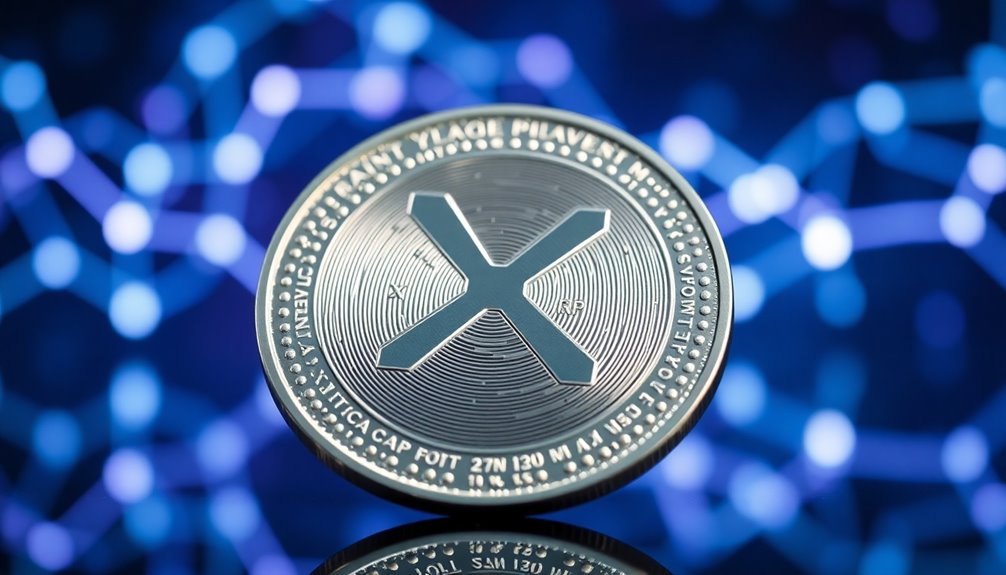Can Ripple’s XRP really take the top spot in the crypto world? Its strong market presence, widespread use in cross-border payments, and growing partnerships suggest it has potential. But with competition from central bank digital currencies and legal challenges, it’s not a straightforward path. You might wonder whether XRP can overcome these hurdles and rise to the very top—there’s more to consider as the story unfolds.

Despite recent fluctuations, Ripple’s XRP remains a leading force in the crypto world, holding a top 3 position by market cap behind Bitcoin and Ethereum. This dominance reflects XRP’s resilience and growing utility, even as its market capitalization has experienced notable ups and downs.
Ripple’s XRP maintains a top 3 market cap position, showcasing resilience and expanding utility despite market fluctuations.
At its peak in July 2025, XRP’s market cap hit around $216 billion, briefly placing it as the 69th most valuable asset globally. Although a decline followed, dropping to roughly $170.7 billion in early August, XRP still ranks among the top cryptocurrencies worldwide. Its ability to maintain such a high standing demonstrates the strength of Ripple’s ecosystem and its potential for future growth.
You should recognize that XRP’s market cap surged from about $30 billion in early 2024, following developments in Ripple’s legal battles with the SEC, to over $120 billion by late 2024. This rapid growth highlights investor confidence in Ripple’s prospects, especially as regulatory uncertainties began to ease. The total supply of XRP tokens is approximately 59.3 billion, which influences its market dynamics.
The circulating supply of approximately 59.3 billion tokens influences XRP’s market dynamics, balancing supply with demand and supporting its valuation. Throughout 2025, XRP traded between $2.87 and $2.93, marking a 38% increase since January and outperforming benchmarks like the S&P 500 and gold.
Despite some volatility, with a brief 5% dip in August, technical forecasts suggest XRP’s price could hover between $2.22 and $3.27 by late 2025, with some analysts projecting potential highs near $5.50.
Your focus should be on XRP’s utility as a bridge asset within global payment systems. Its ability to facilitate faster, cheaper cross-border transfers makes it appealing for banks and financial institutions seeking efficiencies beyond traditional methods.
Ripple’s established enterprise partnerships reinforce XRP’s use case and market position, setting it apart from purely scarcity-driven assets like Bitcoin. Unlike Bitcoin’s fixed supply, XRP’s predictable escrow release schedule offers supply stability, which supports its utility rather than speculative value alone.
However, competition from CBDCs and other digital payment tokens poses ongoing challenges, emphasizing the importance of regulatory clarity and acceptance for broader adoption.
You should also be aware of Ripple’s ongoing legal challenges. The SEC lawsuit starting in 2020 cast a shadow over XRP’s future, with Ripple fined $125 million in August 2024.
Although recent political developments and leadership changes improved investor sentiment, regulatory uncertainty remains the most significant risk to XRP’s growth. Different jurisdictions worldwide approach regulations variably, complicating Ripple’s global expansion and XRP’s acceptance.
While XRP’s current position is strong, whether it can ascend to become the #1 crypto depends on its ability to navigate these legal, regulatory, and competitive hurdles while continuing to expand its utility and adoption in the financial industry.










